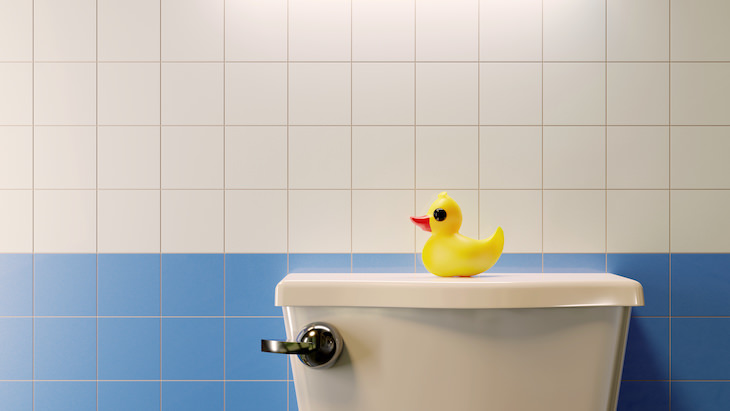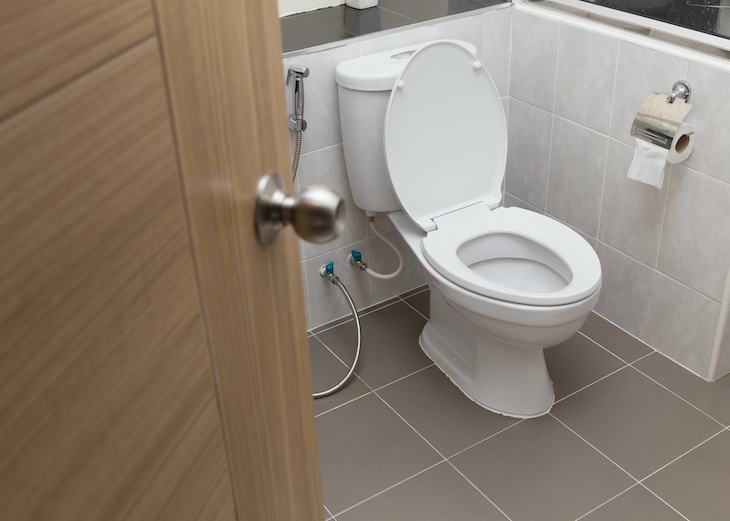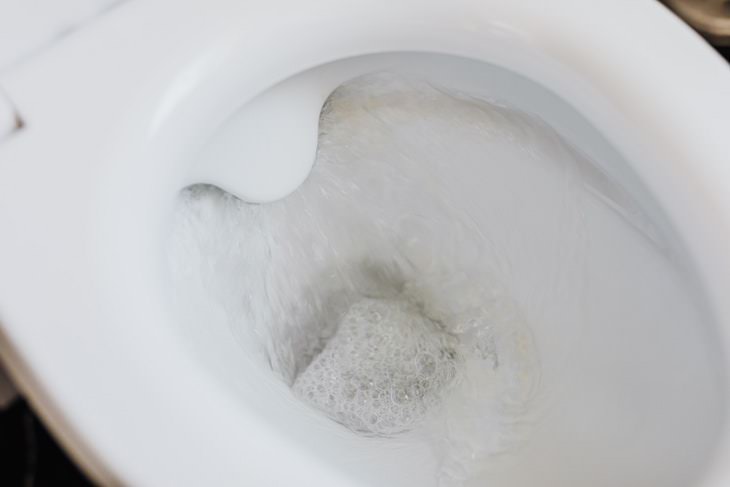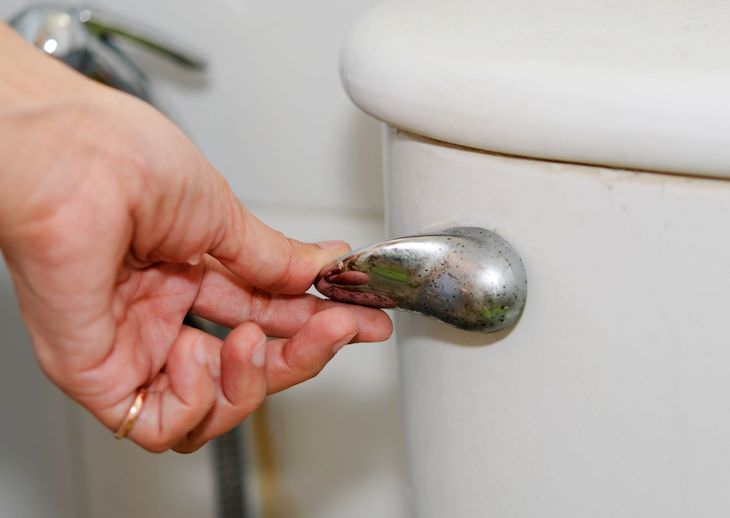
Cleaning and maintaining the toilet and its surroundings is probably one of the most unpleasant household tasks in existence. But if you neglect it or wait around too long when you notice that something is off, you can end up with a much bigger and even less pleasant repair job on your hands. Plumbing problems only get worse and more expensive when you ignore them.
In the article below, we have listed 8 common toilet issues that must be attended to as soon as possible.
If you feel that your toilet isn’t solidly fastened to the floor, don’t underestimate the problem. Any movement of the toilet damages the wax seal, which could lead to leaks and more serious and costly repairs. If you feel like the toilet is wobbly but not leaking yet, the problem can be fixed easily.
Sometimes, a rocking toilet can be fixed by tightening the two bolts at the base of the toilet called the flange bolts or closet bolts. Be careful when doing this, as tightening the bolts too much can crack the brittle porcelain of the toilet, an irreparable issue.
A rocking toilet can also be leveled by inserting shims in the gaps you’ve identified. You may have to adjust them and try a few different positions until the toilet is completely stable. When you’re done, trim the shims close to the base of the toilet as much as needed using a sharp utility knife and caulk around the toilet.
Replacing the toilet seat with a new one is such an easy job, there is simply no need to put up with the discomfort of a cracked or damaged toilet seat. The only problem is that removing the old one can be a frustrating task. Often, the bolts that fasten the seat are so corroded that unscrewing the nuts becomes very difficult.
Use a flat head screwdriver to remove the protective caps over the bolts. Gently work your way around the cap to carefully remove it and expose the bolt itself. Once you have taken off the cap, you’ll see the top of the bolt holding the toilet seat in place. Underneath the toilet, you will notice the bolts sticking out. They should be held firm by two nuts. Use your pliers to keep the nuts in place and unscrew the bolts with your screwdriver. And voila, since the bolts are loose, you can easily remove the old toilet seat and replace it with a new one.
Related: 8 Things You Shouldn't Flush Down the Toilet

If you live in an area where summers are humid, you may notice that the toilet is starting to “sweat” excessively during the warm months. Condensation forms on the outside of the tank and can drip down, making a mess or damaging the floor.
Several manufacturers make toilet-tank insulators that are meant to solve the problem, but they don’t always work very well. One possible solution is to dry out the air in the bathroom with an air conditioner or a dehumidifier. However, not everyone has one of these units or wants to run them all summer.
If that’s the case, one thing you can do is install an anti-sweat valve. An anti-sweat valve adds a little hot water to the toilet water line, which raises the water temperature in the toilet enough to warm up the tank and the bowl. That's all it takes to keep condensation from forming, even in the most sultry weather.

While a running toilet may not seem like a big deal, it’s important to take care of it as soon as possible. If left unchecked, this problem can waste hundreds of gallons of water and grow to be quite a costly repair. Not to mention that pesky constant sound of dripping or running water.
To learn how you can easily fix a running toilet, take a look at our guide on the subject: Repair a Running Toilet in No Time With These 4 Tips.

If your toilet lacks flushing power, the most common culprit is actually the most obvious one. Often, waste and debris can form a ‘partial’ clog in toilet pipes over time. These clogs aren’t enough to stop the water flow completely, but they can slow it down significantly and lead to a weak flush.
One solution is simply plunging the toilet. Use a flange plunger to plunge your toilet for 10 to 15 seconds. After you plunge, try flushing the toilet again and watch if there's any improvement. Repeat the plunging two to three times if necessary, but be careful not to plunge too hard.
If the partial clog is very stubborn, try turning off the toilet’s water, flushing it, and then adding hot (not boiling) water to the bowl. Let the water sit for several minutes, then flush it. For more information on how to unclog a toilet without a plunger, check out this guide.

It doesn’t take long for the hinge screws on a toilet seat to rust, and then you are left with rust dust all over the toilet rim every time the seat slams. Luckily, there is a super-easy way to prevent this. Simply dab a bit of transparent nail polish onto the screw heads. If the screws are already rusty, fill the holes with caulk.

Faulty flush handles are sometimes the reason a toilet keeps running. When the flush handle becomes too loose or corroded, it no longer pulls the flap up or drops it back down improperly.
Replacing it is fairly simple. Just open the tank, and turn the retaining nut to the left to loosen it. Then remove the old handle and lever, slide the new handle into place, and thread the retaining nut.
Caulking around the toilet is essential for two reasons: to secure it to the floor and to prevent foul odor. It also looks more aesthetic and makes cleaning easier. If you don’t caulk your toilet, you could find yourself smelling leftover residue from smelly mop water, tub water, and body waste.
The best way to go about it is to caulk around your toilet base and only leave a small area at the back of the toilet. That way you will be able to notice water on the bathroom floor should your toilet be leaking.
Share these important tips with others